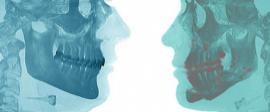Oral and Maxillofacial Surgery - section Surgery, dealing with the treatment of congenital and acquired diseases of the skull, face, head and neck, jaw and oral. Acquired pathology can be traumatic, oncological or involutory character.
These include:
• Pathological changes in bone tissue of the upper and lower jaws;
• Diseases of the salivary glands;
• Pathology of the temporomandibular joint (conservative and surgical treatment);
• Facial injuries (broken bones and injuries of teeth);
• tumor (resection with carrying out reconstructive operations, microsurgery);
• Diseases of the mucosa.
Traumatic injuries maxillofacial region - fractures facial bone, resulting from accidents or violence, need special treatment in order to restore not only the aesthetics but also the functionality of the damaged area.
Injuries teeth can range from minor damage of enamel to the separation of the tooth from the supporting bone. In the case of tooth injury required operative actions to preserve the dental organ.
Maxillofacial surgery provides treatment of diseases the all maxillofacial region, and not only the pathology of the oral cavity, as Surgical dentistry. The primary goal of treatment in oral and maxillofacial surgery - removal of functional and aesthetic disorders, and not only aesthetic correction as in plastic surgery. Currently Maxillofacial Surgery is one of the most sought after areas of modern medicine.
Diagnostics and Treatment
The initial stage of diagnosis is the conduct of clinical research methods: collecting complaints, history of disease, examination, instrumental and laboratory methods of research (including X-ray examination). In some cases, appoint additional methods of research, such as computed tomography, magnetic resonance imaging and other.
The main method of treatment in oral and maxillofacial surgery - a surgical intervention. All operations are carried out using modern minimally invasive techniques including endoscopy, which allow to obtain functional and cosmetic results. Sparing, intraoral approach allow to avoid of formation rough, after operating scars, reduce the period of hospitalization and the patient's recovery.
hide
 Oral and Maxillofacial Surgery - a branch of medicine dealing with the diagnosis, treatment, rehabilitation, prevention of diseases and injuries of the maxillofacial region.
Oral and Maxillofacial Surgery - a branch of medicine dealing with the diagnosis, treatment, rehabilitation, prevention of diseases and injuries of the maxillofacial region. 






